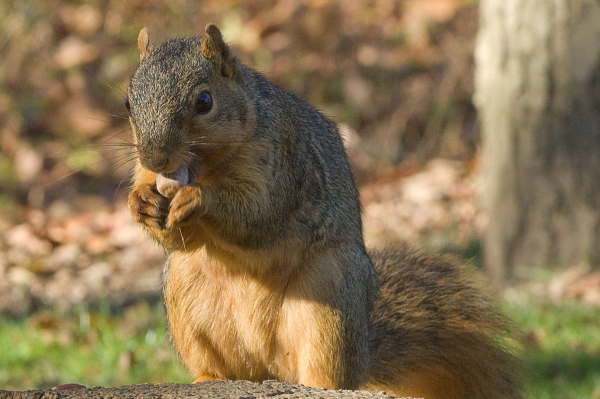Tree Fertilizing Tips From Chestnut Hill Outdoors
 Spring brings forth new growth for trees on your whitetail food plot, and this is an excellent time to give your producers of mast and fruit a good shot of nutrition. We’re talking, of course, about fertilizing your trees.
Spring brings forth new growth for trees on your whitetail food plot, and this is an excellent time to give your producers of mast and fruit a good shot of nutrition. We’re talking, of course, about fertilizing your trees.
Chestnut Hill Outdoors, propagators of a wide range of trees for land managers, including their signature disease-resistant Dunstan Chestnuts as well as oaks, pears, persimmons and apples, has some important advice about proper fertilizing.
It is important to provide a balanced fertilizer such as Scotts Osmocote time release with minor elements. Absence of elements such as iron, manganese, zinc, copper and boron in certain soils can inhibit plant growth. Chestnut Hill recommends using Scotts Osmocote Indoor/Outdoor (19-6-12) for younger trees. For mature trees, Scotts Osmocote Vegetable/Flower (14-14-14) is a good choice.
Chestnut Hill Outdoors also recommends contacting your local extension service for recommendations, along with a soil test to make sure the soil is favorable for your trees. Here are some more tips and considerations:
* Strong rains can leach away much of the nitrogen, which is highly soluble. Nitrogen is a key element required for plant growth.
* Do not fertilize at planting. Quick-release lawn or garden fertilizer can burn the tender roots of young trees before they become established. Wait at least a month after the trees have leafed out before fertilizing with a time-released fertilizer.
* After applying the fertilizer, water your trees lightly for absorption.
* Once the trees are established, fertilize in early spring when seasonal growth begins with a time release fertilizer.
* DO NOT FERTILIZE IN THE FALL, which could promote late season tender growth that can be damaged in early frosts.
Chestnut Hill Outdoors also notes that soil pH-its acidity or alkalinity-is another big consideration. The best range for most fruit and flowering trees is between 5.0 and 7.0 (your County Extension Agent can help with a soil test).
If the soil has more acidity (4.0 to 5.0), as is common in pine woods, raise the pH by applying lime or dolomite.
In locations with more alkaline soil (many places in Texas, for example), nitrogen sulfate or other sulfur-based fertilizers may be needed.
Land managers who want a healthy deer herd know that good crops of mast and fruit can help. Chestnut Hill Outdoors stands ready to help with advice on the right kind of fertilizer, properly applied to help all trees reach their full potential. Check out www.chestnuthilloutdoors.com for more information.
Chestnut Hill is the best place for you to purchase your food plot and deer attractant plants because they offer a large selection, their plants are specifically bred to attract deer, and they offer customers different sized plants at different levels of growth.
For more information, please visit
WWW.CHESTNUTHILLOUTDOORS.COM






